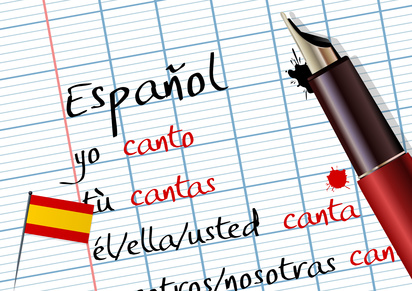The present tense in the Spanish language can be tricky for newcomers, as one finds more than a few irregular verbs that need to be memorized. It may be helpful to think of present tense verbs belonging to one of four categories in the present tense: regular, stem-changing, first-person irregular and totally irregular.
1. Examples of regular verb conjugations are as follows:
trabajar
trabajo,trabajas,trabaja,trabajamos, trabajan
escribir
escribo, escribes, escribe, escribimos. escriben
2. Stem-changing conjugations are as follows:
cerrar (e-ie) poder (o-ue) pedir (e-i)
cierro puedo pido
cierras puedes pides
cierra puede pide
cerramos podemos pedimos
cierran pueden piden
3. Common first-person irregular conjugations:
hacer = hago conocer = conozco
poner = pongo conducir = conduzco
4. Common totally irregular verb conjugations:
tener ser estar ir
tengo soy estoy voy
tienes eres estás vas
tiene es está va
tenemos somos estamos vamos
tienen son están van
The present tense in Spanish is very versatile. It can be used in the following situations:
1. To express a habitual action Trabajo mucho. I work a lot.
2. To express an ongoing action. Trabajo mucho. I am working a lot.
3. To express a future action. Trabajo pronto. I am working soon.
4. To ask yes/no questions. ¿Trabajas mucho? Do you work a lot?








